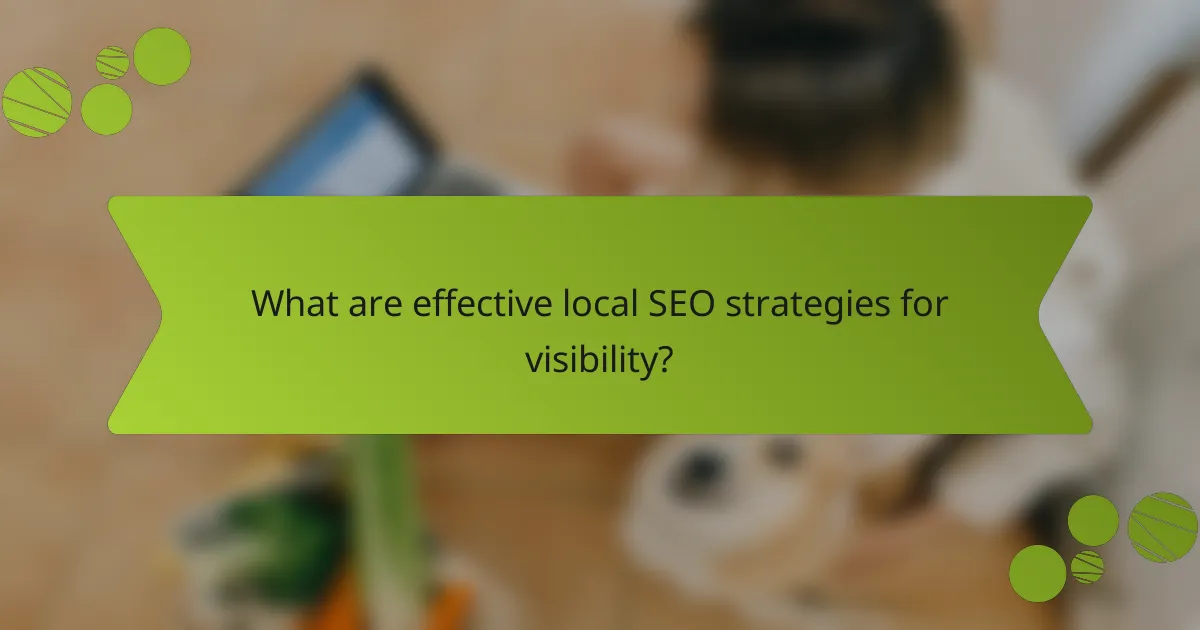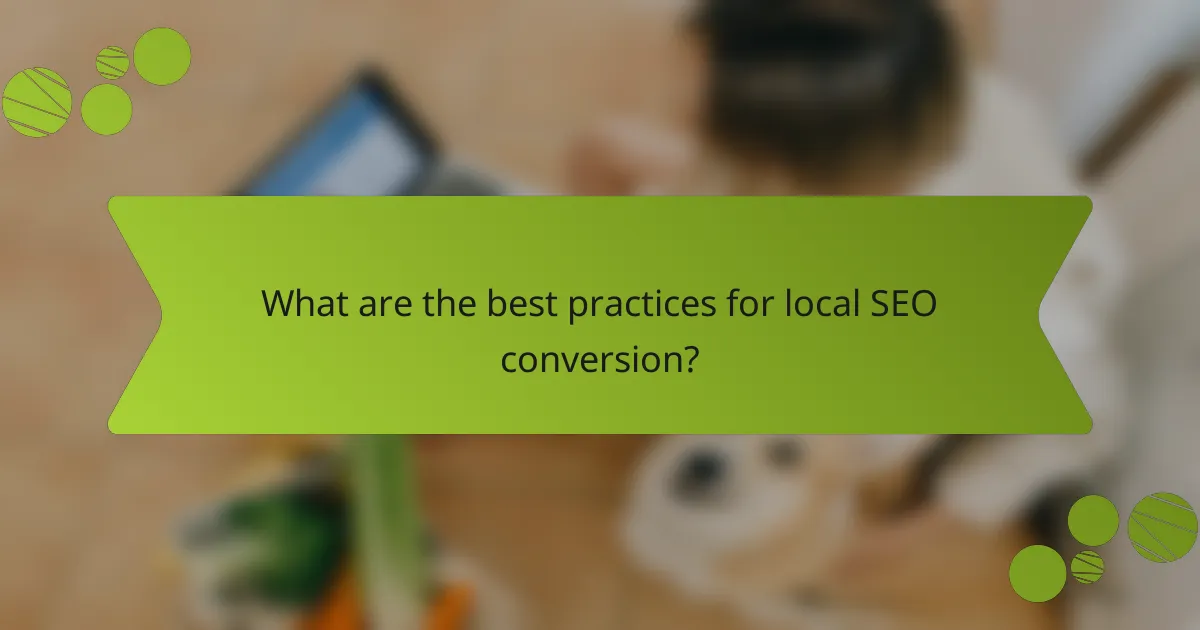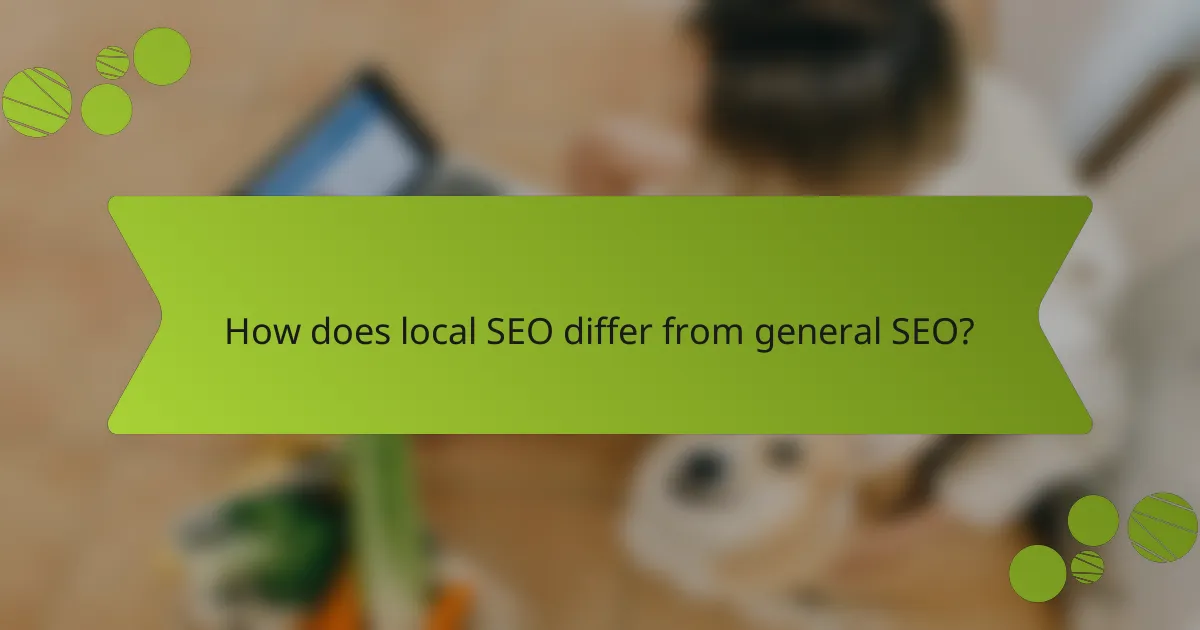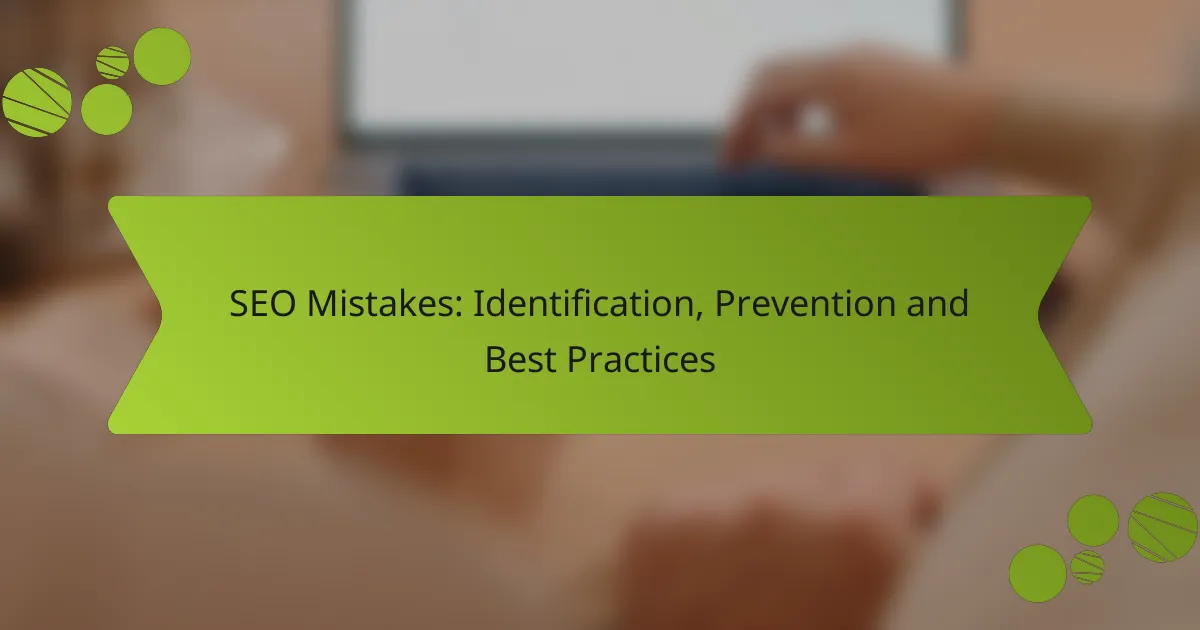Local SEO strategies are essential for improving your business’s visibility in local search results, making it easier for potential customers to discover your services. By optimizing your online presence through techniques such as Google My Business optimization, local keyword research, and managing customer reviews, you can enhance engagement and foster stronger community connections. Additionally, focusing on conversion practices like mobile optimization and effective call-to-actions can drive meaningful customer interactions and boost sales.

What are effective local SEO strategies for visibility?
Effective local SEO strategies enhance your business’s visibility in local search results, making it easier for potential customers to find you. Key strategies include optimizing your Google My Business listing, conducting local keyword research, ensuring NAP consistency, building local backlinks, and managing customer reviews.
Google My Business optimization
Optimizing your Google My Business (GMB) listing is crucial for local visibility. Ensure your business name, address, and phone number are accurate and match your website. Add high-quality images, business hours, and a detailed description to improve engagement.
Regularly update your GMB profile with posts about promotions or events to keep your audience informed. Responding to customer inquiries through GMB can also enhance your local ranking and customer interaction.
Local keyword research
Local keyword research involves identifying search terms that potential customers use to find services in your area. Use tools like Google Keyword Planner or SEMrush to discover relevant keywords that include your city or region.
Incorporate these keywords naturally into your website content, meta descriptions, and blog posts. Focus on long-tail keywords, as they often have less competition and can drive targeted traffic to your site.
NAP consistency
NAP consistency refers to ensuring that your business name, address, and phone number are uniform across all online platforms. Inconsistent information can confuse search engines and customers, negatively impacting your local SEO.
Regularly audit your listings on directories, social media, and your website. Use tools like Moz Local or Yext to help manage and correct any discrepancies across various platforms.
Local backlinks
Building local backlinks is essential for improving your website’s authority and local search ranking. Collaborate with local businesses, participate in community events, or sponsor local organizations to earn backlinks from reputable sources.
Consider creating valuable content that local websites would want to link to, such as guides or studies relevant to your community. This not only boosts your SEO but also positions your business as a local authority.
Customer reviews management
Managing customer reviews is vital for local SEO and overall reputation. Encourage satisfied customers to leave positive reviews on platforms like Google, Yelp, or Facebook, as these can influence potential customers’ decisions.
Respond to reviews, both positive and negative, to show that you value customer feedback. Addressing negative reviews professionally can mitigate damage and demonstrate your commitment to customer satisfaction.

How can local SEO enhance engagement?
Local SEO enhances engagement by optimizing your online presence to attract local customers. This involves tailoring content and interactions to resonate with the community, ultimately fostering stronger connections and increasing customer loyalty.
Content marketing for local audiences
Content marketing for local audiences focuses on creating relevant and valuable content that speaks directly to the interests and needs of the community. This can include blog posts, videos, or infographics that highlight local events, culture, or issues.
Consider using local keywords and phrases in your content to improve visibility in search results. For instance, a restaurant might write about local food festivals or seasonal dishes that feature regional ingredients, which can attract both locals and tourists.
Social media interaction
Social media interaction is crucial for engaging with local audiences in real-time. Platforms like Facebook, Instagram, and Twitter allow businesses to share updates, respond to customer inquiries, and participate in community conversations.
Encourage user-generated content by asking customers to share their experiences with your brand. For example, a local coffee shop could run a photo contest where customers post pictures of their favorite drinks, fostering a sense of community and increasing brand visibility.
Local events promotion
Promoting local events can significantly enhance engagement by positioning your business as an active community participant. This can involve sponsoring events, hosting workshops, or simply sharing information about local happenings on your website and social media.
Be sure to collaborate with local organizations to maximize reach. For example, a fitness studio might partner with a local charity for a fun run, promoting both the event and their brand while engaging with the community in a meaningful way.

What are the best practices for local SEO conversion?
Effective local SEO conversion practices focus on enhancing user engagement and driving actions that lead to sales or inquiries. Implementing strategies like optimizing call-to-actions, ensuring mobile-friendliness, and localizing landing pages can significantly improve conversion rates.
Call-to-action optimization
Optimizing call-to-actions (CTAs) is crucial for guiding users toward desired actions, such as making a purchase or contacting your business. Use clear, action-oriented language and ensure CTAs are prominently placed on your website. For example, phrases like “Get a Free Quote” or “Book Your Appointment Today” can be more effective than generic terms.
Consider A/B testing different CTA designs and placements to find what resonates best with your audience. Ensure that your CTAs are visually distinct and accessible on both desktop and mobile devices.
Mobile-friendly website design
A mobile-friendly website design is essential for local SEO, as a significant portion of users search for local services on their smartphones. Ensure your site loads quickly, typically within a few seconds, and is easy to navigate on smaller screens. Use responsive design techniques to adapt your content to various devices.
Incorporate large, tappable buttons and a simplified menu structure to enhance user experience. Google prioritizes mobile-friendly sites in search rankings, so optimizing for mobile can improve both visibility and conversion.
Landing page localization
Landing page localization involves tailoring your content to reflect the local culture, language, and preferences of your target audience. This can include using local dialects, showcasing community events, or highlighting regional products and services. Such personalization can create a stronger connection with potential customers.
Additionally, ensure that your contact information, including address and phone number, is prominently displayed and consistent across all platforms. Localized landing pages can significantly enhance your relevance in local search results, driving more qualified traffic to your site.

What metrics should be tracked for local SEO success?
To achieve local SEO success, it is crucial to track metrics that reflect visibility, engagement, and conversion. Key metrics include website traffic, conversion rates, and local search rankings, as they provide insights into how well your local SEO strategies are performing.
Website traffic analysis
Website traffic analysis focuses on understanding the volume and sources of visitors to your site. Tools like Google Analytics can help you identify how many users are coming from local searches, which pages they visit, and how long they stay. Look for trends over time to see if your local SEO efforts are driving more traffic.
Pay attention to metrics such as unique visitors, page views, and bounce rates. A high bounce rate may indicate that your content is not relevant to local searchers, prompting a review of your keywords and content strategy.
Conversion rate tracking
Conversion rate tracking measures the percentage of visitors who complete desired actions, such as making a purchase or filling out a contact form. For local businesses, this is particularly important as it reflects the effectiveness of your local SEO in attracting customers who are ready to engage.
To improve conversion rates, analyze the user journey and identify potential drop-off points. A/B testing different calls to action or optimizing landing pages for local keywords can lead to better results. Aim for a conversion rate that aligns with industry standards, typically ranging from 1% to 5% for e-commerce sites.
Local search rankings
Local search rankings indicate how well your business appears in search results for location-based queries. Tools like Moz or SEMrush can help you track your rankings for specific keywords relevant to your area. Regularly monitoring these rankings helps assess the impact of your local SEO strategies.
Focus on optimizing your Google My Business listing, ensuring accurate information, and gathering customer reviews. Aim to appear in the local pack (the top three local results) for your target keywords, as this significantly increases visibility and potential customer engagement.

What are the prerequisites for implementing local SEO?
To implement local SEO effectively, businesses must establish a strong online presence, optimize their website for local search, and ensure accurate business information across various platforms. This foundation is crucial for improving visibility, engagement, and conversion rates in local markets.
Understanding target audience
Identifying your target audience is essential for local SEO success. Consider demographics such as age, gender, and location, as well as interests and behaviors that influence purchasing decisions. Tailoring your content and marketing strategies to meet the specific needs of your audience can significantly enhance engagement.
Utilize tools like Google Analytics and social media insights to gather data about your audience. This information can help you create localized content that resonates with potential customers, increasing the likelihood of conversions.
Competitor analysis
Conducting a competitor analysis is vital for understanding the local SEO landscape. Identify your main competitors in the area and analyze their online presence, including their website, social media, and customer reviews. This will provide insights into their strengths and weaknesses, allowing you to refine your own strategies.
Look for gaps in their offerings or areas where you can differentiate your business. Tools like SEMrush or Moz can help you assess their keyword strategies and backlink profiles, enabling you to develop a more effective local SEO plan that targets underserved segments of the market.

How does local SEO differ from general SEO?
Local SEO focuses on optimizing a business’s online presence to attract customers from specific geographic areas, while general SEO targets a broader audience without geographical constraints. This means local SEO incorporates location-based keywords, Google My Business listings, and local citations to enhance visibility in local search results.
Focus on local search intent
Understanding local search intent is crucial for effective local SEO. Users often search for services or products with a specific location in mind, such as “best coffee shop near me” or “plumbers in Boston.” Tailoring content to address these localized queries can significantly improve engagement and conversion rates.
To optimize for local search intent, incorporate location-specific keywords throughout your website and content. Use phrases that reflect the local culture or landmarks, and ensure that your business information is consistent across all platforms.
Importance of local citations
Local citations are mentions of your business’s name, address, and phone number (NAP) on various online platforms, including directories and social media. These citations help establish credibility and improve your local search rankings. Consistent and accurate citations can lead to better visibility in local search results.
To maximize the impact of local citations, ensure your NAP information is uniform across all listings. Focus on reputable directories like Yelp, Yellow Pages, and local chambers of commerce. Regularly audit your citations to correct any discrepancies that may arise.









